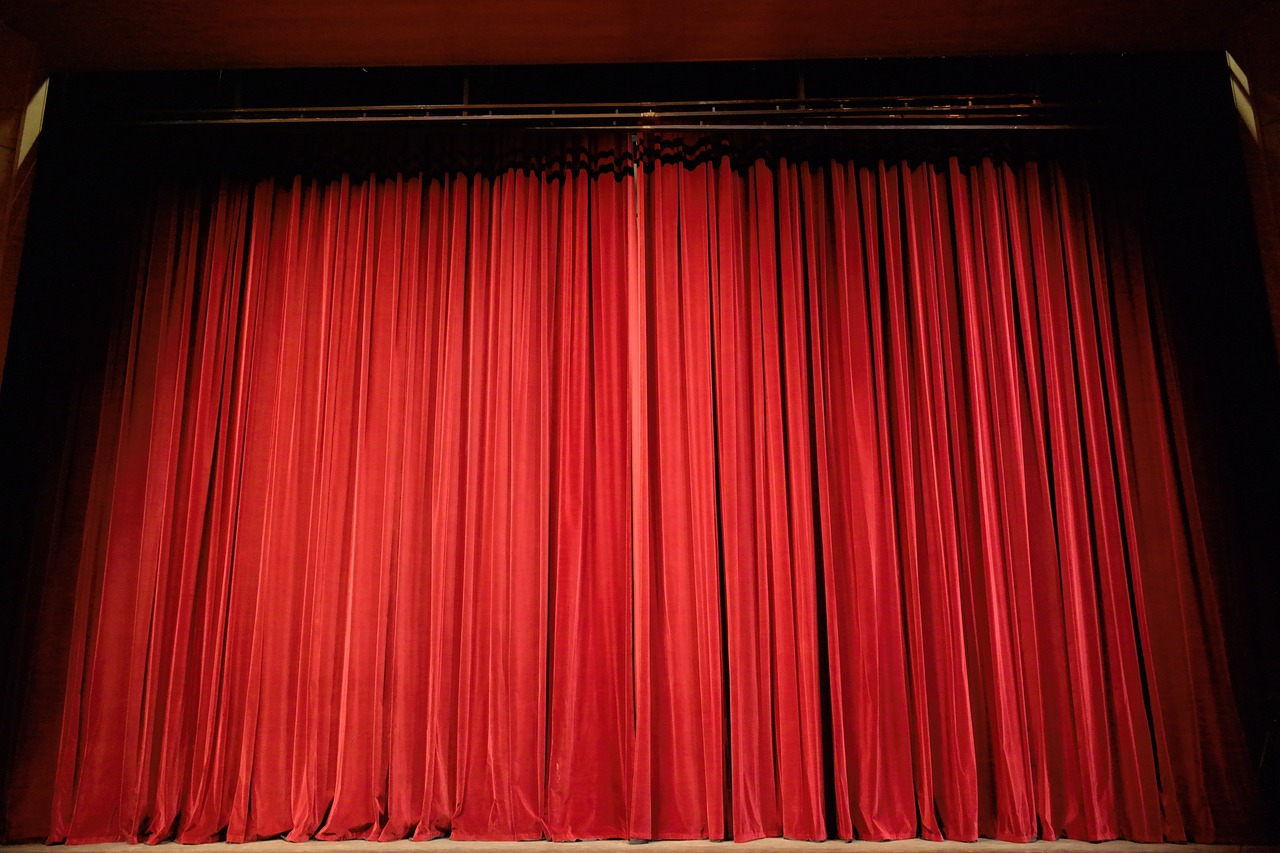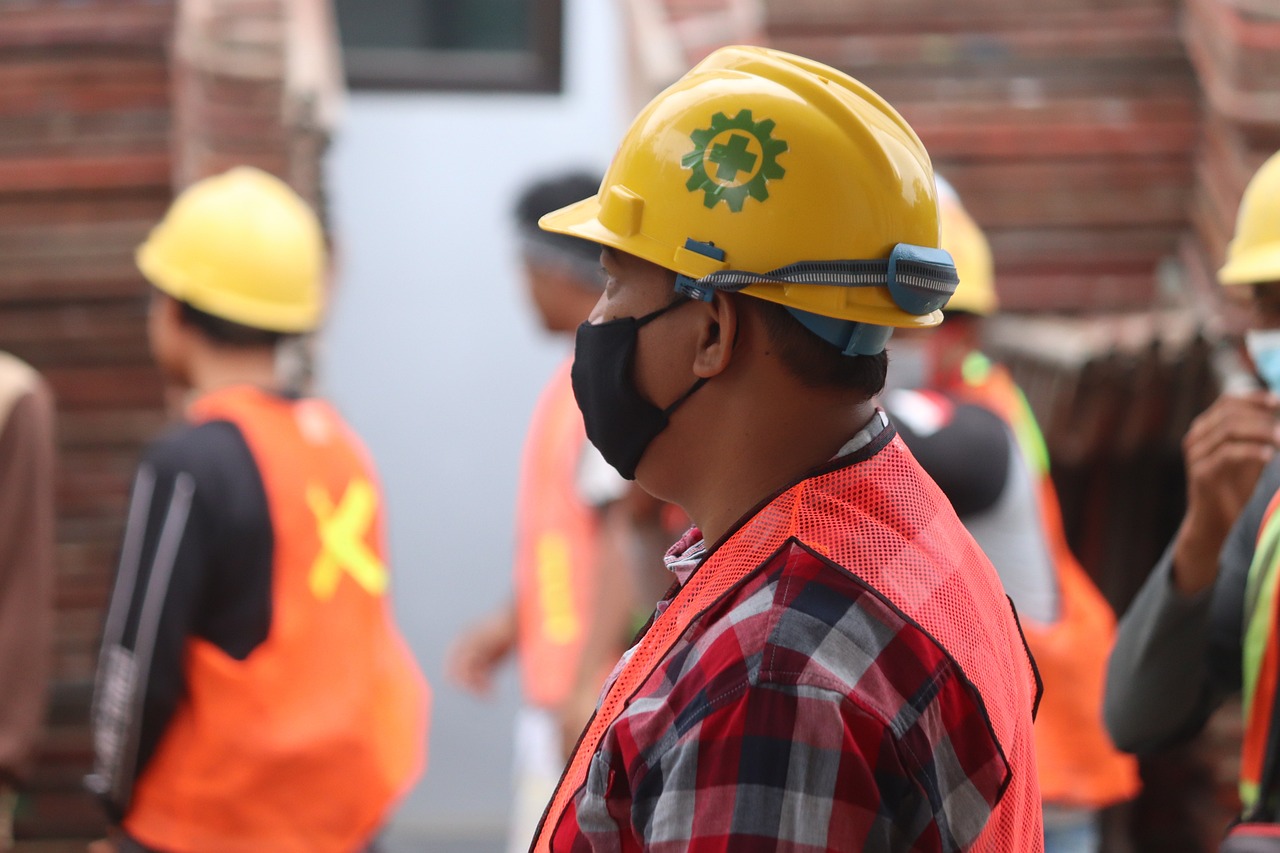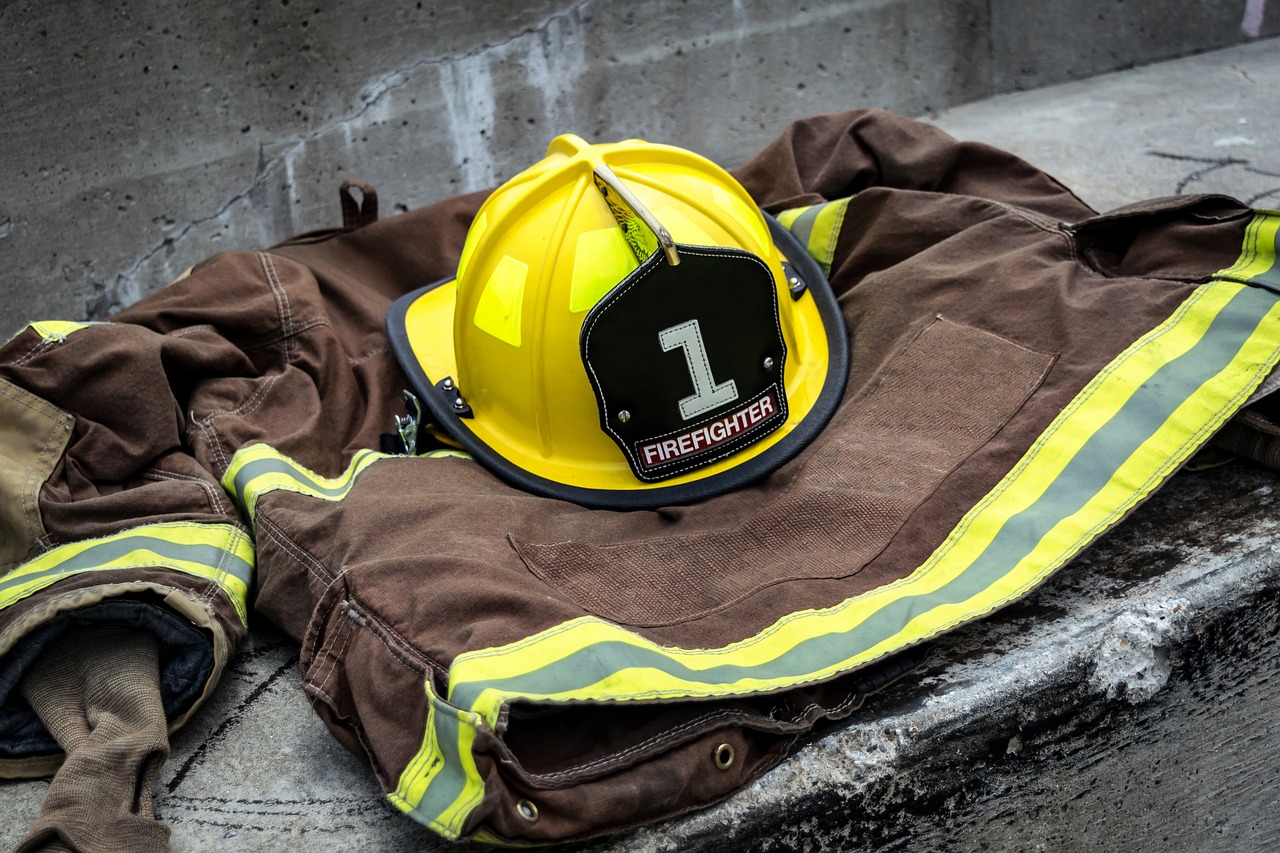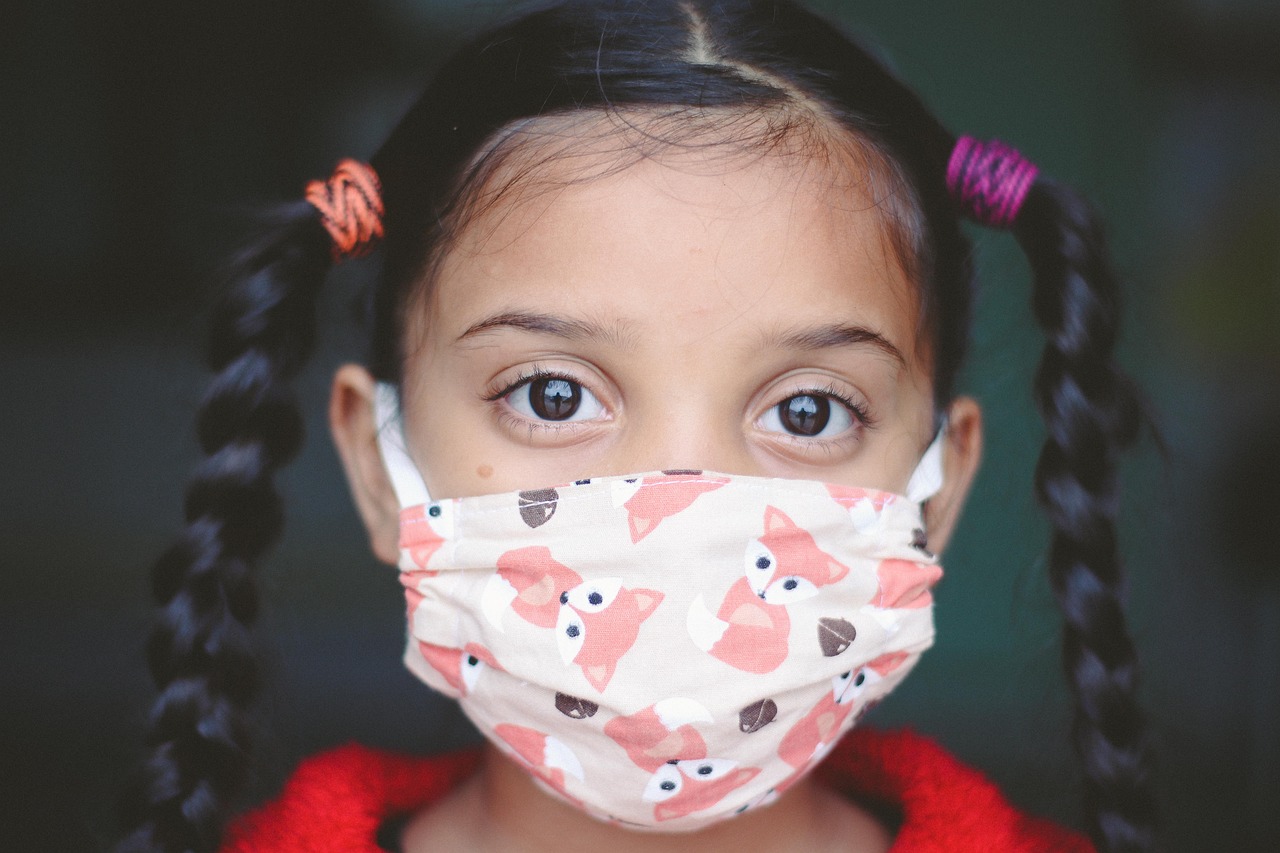Safety in Theater: Ensuring Smooth Performances
When you think about the magic of theater, it’s easy to get lost in the dazzling lights, the captivating performances, and the electric atmosphere. However, behind this enchanting facade lies a world that demands strict attention to safety measures. Ensuring smooth performances isn’t just about nailing the script or perfecting the choreography; it’s also about creating a secure environment for everyone involved. Imagine a world where performers can focus solely on their craft, and audiences can immerse themselves in the story without a hint of worry. That’s the ultimate goal of safety in theater.
In a bustling theater, potential hazards can lurk around every corner. From heavy stage equipment to intricate lighting setups, the risks are real. But fear not! With the right risk management strategies, these dangers can be significantly minimized. This article dives into the essential safety measures that every theater should adopt, focusing on risk management, emergency protocols, and the crucial role of training. After all, a safe theater is a happy theater, where creativity can flourish without interruptions.
So, why is it so important to prioritize safety in theater? Well, think of it like a well-rehearsed play—every element must work in harmony for the show to go on. Just as actors rehearse their lines and cues, theaters must prepare for the unexpected. By implementing comprehensive safety protocols, theaters not only protect their performers and audiences but also enhance their reputation. A theater known for its commitment to safety attracts more visitors and talent, creating a vibrant community around the arts.
In the following sections, we will explore how to identify potential hazards, develop emergency preparedness plans, and train staff and performers effectively. We’ll also delve into the specifics of fire safety measures, first aid readiness, and audience safety considerations. By the end of this article, you’ll have a robust understanding of how to create a safe and enjoyable theater experience for everyone involved. So, let’s pull back the curtain on safety in theater and discover how to ensure smooth performances that leave lasting impressions!

Identifying Potential Hazards
When it comes to theater, safety is not just a checkbox on a list; it’s a fundamental aspect of every performance. The stage, while a magical place where stories come to life, can also harbor numerous potential hazards that, if left unchecked, could lead to accidents or injuries. Understanding these risks is crucial for everyone involved—performers, crew, and even the audience. So, what are the common hazards we should be aware of?
First and foremost, stage equipment poses significant risks. From heavy props to complex lighting rigs, the equipment used in productions can be both awe-inspiring and dangerous. Imagine a scenario where a spotlight malfunctions and falls from its mount. The consequences could be dire! Regular inspections and maintenance are essential to mitigate such risks. Additionally, the placement of equipment must be carefully considered to avoid tripping hazards. A simple misstep could lead to a catastrophic fall.
Next, we can't overlook the lighting itself. While it sets the mood and enhances the visual experience, it can also create hazards if not managed properly. For instance, high-intensity lights can become extremely hot, posing a burn risk to anyone who inadvertently touches them. Moreover, inadequate lighting can lead to poor visibility, increasing the chances of accidents backstage or in the audience area. Ensuring that all areas are well-lit and that performers are aware of their surroundings is crucial.
Another area of concern is the audience-related issues. The safety of the audience is just as important as that of the performers. Crowds can become unruly or panicked in emergency situations, leading to chaos. This is why clear signage and communication are paramount. Imagine a packed theater during an unexpected event—without proper guidance, people might not know where to go, resulting in injuries or worse. Establishing a clear evacuation plan is vital for maintaining order and safety.
In addition to these hazards, environmental factors must also be taken into account. Theaters often have complex structures with multiple levels and exits. Ensuring that all pathways are clear and that exits are well-marked can make a significant difference in an emergency. Regularly conducting safety audits can help identify areas where improvements are needed.
Ultimately, identifying potential hazards is about being proactive rather than reactive. By understanding the risks associated with theater environments, we can implement measures that protect everyone involved. It's a team effort that requires constant vigilance and communication. So, the next time you step onto a stage or take a seat in the audience, remember that safety is a shared responsibility!

Emergency Preparedness Plans
When it comes to theater safety, are not just a box to check; they are a lifeline. Imagine a packed auditorium, the lights dimming, and the audience buzzing with excitement. But what happens if something goes wrong? Having a solid plan in place can mean the difference between chaos and a smooth evacuation. Therefore, every theater should take the time to develop comprehensive plans that address various potential emergencies.
First and foremost, it's essential to identify the types of emergencies that could arise in a theater setting. From fire outbreaks to medical emergencies, each scenario requires a tailored response. For instance, a fire might necessitate immediate evacuation, while a medical emergency might require quick access to first aid supplies. A well-rounded emergency plan should include:
- Evacuation procedures for different types of emergencies
- Communication strategies to alert staff and audience members
- Designated assembly points outside the theater
Once these elements are identified, the next step is to create a clear and accessible plan that everyone can understand. This plan should be documented and made available to all staff and performers. Consider creating a visual guide that outlines the evacuation routes and emergency contacts. Displaying this information in common areas can serve as a constant reminder of the protocols in place and can help reduce panic in an actual emergency.
Regular drills are another critical component of emergency preparedness. Just like athletes practice their plays, theater staff and performers should routinely rehearse emergency scenarios. These drills not only familiarize everyone with the procedures but also help identify any gaps in the plan that need to be addressed. After each drill, gather feedback and make necessary adjustments to improve the overall effectiveness of your emergency response.
Additionally, it’s crucial to establish a clear line of communication during an emergency. This means designating specific individuals as point persons for communication, ensuring they have access to emergency contact lists, and equipping them with the tools needed to relay information quickly. Consider having a communication tree in place, where each person knows who to contact next in case of an emergency.
Incorporating technology can also enhance your emergency preparedness plans. For instance, using a text alert system can instantly notify staff and audience members of an emergency situation. This can be particularly useful in large venues where traditional communication methods might fall short.
Finally, don’t forget to involve the audience in your safety measures. Before a performance begins, consider making a brief announcement outlining the emergency procedures. This not only informs the audience but also gives them a sense of security, knowing that the theater is prepared for any situation.
In conclusion, developing a comprehensive emergency preparedness plan is not just about ticking off a checklist; it’s about creating a culture of safety within the theater environment. By identifying potential emergencies, training staff, and utilizing technology, theaters can ensure that they are ready to handle any situation that arises, keeping both performers and audiences safe.
Q: What types of emergencies should theaters prepare for?
A: Theaters should prepare for various emergencies, including fires, medical emergencies, and severe weather conditions. Each type requires specific procedures to ensure safety.
Q: How often should emergency drills be conducted?
A: Emergency drills should be conducted at least twice a year to keep staff and performers familiar with the procedures and to identify any areas for improvement.
Q: What should be included in an emergency contact list?
A: An emergency contact list should include local emergency services, nearby hospitals, key theater staff, and any relevant authorities. This information should be easily accessible during an emergency.

Training Staff and Performers
When it comes to ensuring safety in a theater, is not just a checkbox on a to-do list; it’s a vital component that can make the difference between a smooth performance and a potential disaster. Just think about it: every time the curtain rises, there’s a flurry of activity backstage, and the last thing anyone wants is to be caught off guard by an emergency. Regular training sessions create a culture of safety, where everyone understands their roles and responsibilities. This proactive approach not only boosts confidence but also enhances overall performance quality.
Imagine a scenario where a performer suddenly slips during a scene. If the crew is trained to respond quickly and effectively, the situation can be managed without chaos. So, how do we ensure that everyone is prepared? Conducting drills and workshops is key. These sessions can cover everything from basic safety protocols to specific emergency procedures. For instance, a workshop on fire safety could include practical demonstrations on using fire extinguishers or identifying emergency exits. The more hands-on the training, the better equipped everyone will be to handle unexpected situations.
Moreover, it’s essential to incorporate a variety of training methods to cater to different learning styles. For instance, some individuals might benefit from visual aids like infographics or videos, while others might prefer interactive role-playing scenarios. This diversity not only keeps the training engaging but also ensures that the information sticks. Here’s a quick breakdown of effective training methods:
- Workshops: Interactive sessions that allow for hands-on learning.
- Drills: Regular practice of emergency protocols to build muscle memory.
- Visual Aids: Use of posters or digital presentations to illustrate key safety information.
- Feedback Sessions: Opportunities for staff and performers to discuss and improve safety practices.
Additionally, it’s important to foster an environment where communication is encouraged. Staff and performers should feel comfortable asking questions or expressing concerns about safety protocols. Regular meetings can serve as a platform for discussing safety updates or sharing experiences from past performances. This not only keeps everyone informed but also builds a sense of community, where everyone looks out for one another.
In conclusion, investing time and resources into training staff and performers is a fundamental step in creating a safe theater environment. By prioritizing safety education, theaters not only protect their people but also enhance the overall experience for the audience. Remember, a well-trained team is the backbone of a successful performance!
Q1: How often should training sessions be conducted?
A1: Ideally, training sessions should be held at least once every quarter, with additional sessions scheduled before major productions.
Q2: What topics should be covered in safety training?
A2: Key topics include emergency procedures, fire safety, first aid, and equipment handling. Tailoring the content to specific productions can also be beneficial.
Q3: Are there specific certifications required for theater staff?
A3: While not universally mandated, certifications in first aid, CPR, and fire safety can enhance a staff member's qualifications and preparedness.
Q4: How can we ensure that all staff members are engaged during training?
A4: Incorporating interactive elements, such as role-playing and group discussions, can make training more engaging and effective.

Fire Safety Measures
When it comes to theater safety, are among the top priorities. Imagine a packed house, the lights dimming, and the excitement in the air—suddenly, a fire breaks out. It’s a nightmare scenario that no one wants to face. To prevent such disasters, theaters must implement robust fire safety strategies. This involves not just having fire extinguishers on hand, but also ensuring that everyone knows how to use them. Regular training sessions can make all the difference, turning a potential crisis into a manageable situation.
One critical aspect of fire safety is the installation of smoke detectors throughout the venue. These devices are your first line of defense, alerting everyone to danger before it escalates. It's essential to check these detectors regularly to ensure they are functioning properly. Additionally, maintaining clear exits is vital. In the event of an emergency, every second counts, and having well-marked, unobstructed escape routes can save lives.
Moreover, it's important to conduct routine fire drills. Think of it as a rehearsal for safety—just like actors prepare for a show, staff and performers need to be familiar with emergency procedures. During these drills, everyone learns the quickest routes to safety and understands their roles in an evacuation. This practice can significantly reduce panic and confusion during a real emergency.
To further enhance fire safety, theaters should consider creating a comprehensive fire safety plan. This plan should include:
- Evacuation routes and assembly points
- Roles and responsibilities for staff during a fire
- Regular maintenance schedules for fire safety equipment
- Contact information for local fire departments and emergency services
In addition to these measures, it's crucial to educate everyone involved in the production about fire hazards. For instance, knowing the risks associated with stage materials, such as flammable props or costumes, can help in making informed decisions about what to use on stage. By fostering a culture of safety, theaters can ensure that fire safety becomes a shared responsibility.
Ultimately, fire safety in theaters is not just about compliance with regulations; it's about creating a secure environment where creativity can flourish without fear. By prioritizing these measures, theaters can protect both their performers and their audiences, allowing for a more enjoyable and secure experience for everyone involved.
Q: What should I do if I notice a fire during a performance?
A: If you notice a fire, remain calm and alert the nearest staff member immediately. Follow the evacuation procedures and use the nearest exit to leave the building safely.
Q: How often should fire drills be conducted?
A: Fire drills should be conducted at least twice a year to ensure everyone is familiar with the evacuation procedures and roles during an emergency.
Q: Are there specific fire safety regulations theaters must follow?
A: Yes, theaters must comply with local fire safety codes, which include regulations on fire exits, smoke detectors, and fire extinguishers. It's essential to stay updated with these regulations to ensure safety.

First Aid Readiness
When it comes to theater safety, is not just an option; it's a necessity. Imagine this: the curtains rise, the audience is captivated, and suddenly, someone trips and falls on stage. In the blink of an eye, a thrilling performance can turn into a chaotic scene. That’s why having a well-stocked first aid kit and trained personnel on-site is essential for every theater.
First aid readiness means being prepared for the unexpected. It’s not just about having a few band-aids tucked away in a drawer; it’s about creating a comprehensive plan that includes the right supplies and trained individuals who know how to use them. A robust first aid kit should include items such as:
- Adhesive bandages of various sizes
- Antiseptic wipes and ointments
- Gauze pads and adhesive tape
- Elastic bandages for sprains
- Scissors and tweezers
- CPR face shields
- Emergency blanket
- Cold packs
But it doesn’t stop there. Ensuring first aid readiness also means having trained personnel who can respond quickly and effectively. Regular first aid training sessions should be conducted for all staff and performers. This not only helps them feel more confident in their abilities but also fosters a culture of safety within the theater. Imagine a scenario where a performer collapses due to exhaustion or a sudden medical issue. If someone on the team is trained in first aid, they can act swiftly, potentially saving a life.
Moreover, it’s vital to conduct periodic drills that simulate emergencies. These drills can help everyone understand their roles and responsibilities in a crisis. Just like rehearsing lines for a performance, practicing first aid procedures can make all the difference when the spotlight is not on stage but on someone's health and safety.
In addition to training, maintaining an up-to-date inventory of first aid supplies is crucial. Regular checks should be made to ensure that items are not expired and that the kit is fully stocked. The last thing you want is to reach for a supply only to find it missing or outdated. It's like preparing for a grand performance and realizing your props are broken or missing just moments before the show starts!
Finally, the importance of clear communication cannot be overstated. In the event of an emergency, everyone needs to know who to contact and how to relay information quickly. Establishing a clear chain of command can help facilitate this. Consider having a designated first aid officer for each performance, someone who can take charge in case of an emergency. This individual should be easily identifiable, perhaps wearing a badge or vest, so they can be quickly located amidst the hustle and bustle of a live performance.
In conclusion, first aid readiness in theaters is about more than just having a kit; it’s about fostering a safe environment where everyone feels secure. By prioritizing first aid training and ensuring that supplies are readily available, theaters can create a safety net that protects both performers and audiences alike.
Q1: What should be included in a theater's first aid kit?
A1: A comprehensive first aid kit should include adhesive bandages, antiseptic wipes, gauze pads, elastic bandages, scissors, tweezers, CPR face shields, emergency blankets, and cold packs.
Q2: How often should first aid training be conducted?
A2: First aid training should be conducted regularly, at least once a year, and whenever new staff or performers join the team.
Q3: Who should be responsible for first aid readiness in a theater?
A3: It’s beneficial to designate a first aid officer for each performance who can take charge in case of an emergency, ensuring clear communication and swift action.
Q4: Why are emergency drills important?
A4: Emergency drills help familiarize staff and performers with their roles during a crisis, ensuring that everyone knows how to respond quickly and effectively.

Audience Safety Considerations
When it comes to theater, the magic doesn't just happen on stage; it extends to the audience as well. Ensuring audience safety is a crucial aspect that often gets overlooked. After all, a packed theater can be a delightful experience, but it can also pose certain risks if not managed properly. So, what can theaters do to keep their guests safe while they enjoy a show? Let’s dive into some essential considerations that can make all the difference.
First and foremost, crowd management is vital. A well-organized audience is a happy audience. Theaters should have trained staff positioned at key locations to guide patrons as they enter and exit the venue. This not only prevents bottlenecks but also helps in case of an emergency evacuation. Imagine a packed house suddenly needing to exit—without proper guidance, chaos could ensue. By having ushers and security personnel strategically placed, theaters can ensure that audience members remain calm and orderly.
Another critical factor is the use of clear signage. Think about it: if you were in a darkened theater, would you know where the exits are? Properly illuminated signs indicating emergency exits, restrooms, and even concessions can significantly enhance audience safety. These signs should be visible from various angles and should utilize universally recognized symbols to avoid any confusion. In addition, pre-show announcements can remind patrons of safety protocols, making sure everyone is on the same page.
Communication is key, especially during performances. The use of technology, such as mobile alerts or text messages, can keep audience members informed about any urgent situations. For example, if there is a need for evacuation, a quick text message can guide everyone to the nearest exit without causing panic. Moreover, incorporating a well-structured emergency plan that includes communication strategies ensures that both staff and audience members know what to do in unexpected situations.
It’s also essential to consider the physical layout of the theater. Theaters should conduct regular assessments to ensure that aisles are clear and seating arrangements allow for easy movement. This is especially important for individuals with disabilities. Providing accessible seating and ensuring that pathways are unobstructed can make a significant impact on overall safety. Not to mention, it shows that the theater values all of its patrons equally.
Lastly, let's not forget about the importance of audience awareness. Educating patrons about their surroundings, such as where the exits are located and how to respond in case of an emergency, can empower them to act responsibly. Some theaters even offer workshops or informational sessions before a performance to enhance this awareness. In the end, a well-informed audience is a safer audience.
Q: What should I do if I feel unsafe during a performance?
A: If you ever feel unsafe, alert a staff member immediately. They are trained to handle various situations and can assist you.
Q: How can I find the nearest exit in a dark theater?
A: Look for illuminated exit signs, which are typically placed above doors. Additionally, ushers can guide you if needed.
Q: Are there safety measures for individuals with disabilities?
A: Yes, theaters are required to provide accessible seating and pathways. Always check with the venue ahead of time for specific accommodations.
Q: How often are safety protocols reviewed?
A: Theaters should review their safety protocols regularly, often before each season or major performance, to ensure they are up to date.

Equipment Maintenance and Safety Checks
When it comes to ensuring a safe environment in theaters, are non-negotiable. Just imagine a breathtaking performance that suddenly turns into chaos because a crucial piece of equipment fails. It’s not just about the show; it's about the safety of everyone involved. Regular maintenance is essential to prevent such mishaps, and it begins with a thorough understanding of the equipment being used. From lighting rigs to sound systems, every piece of gear has its own set of requirements and vulnerabilities that need to be addressed.
One of the first steps in establishing a robust maintenance routine is to create a detailed inventory of all equipment. This inventory should include specifics such as model numbers, purchase dates, and maintenance history. By keeping track of this information, theaters can anticipate when certain items will need servicing or replacement. Moreover, it provides a clear picture of the equipment's life cycle, allowing for better budgeting and planning.
In addition to maintaining an inventory, implementing a regular schedule for safety checks is crucial. These checks should not only assess the functionality of the equipment but also inspect for any potential hazards. For instance, lighting fixtures should be checked for frayed wires or loose connections, while sound equipment should be evaluated for distortion or feedback issues. A simple checklist can be an effective tool for ensuring nothing is overlooked:
| Equipment Type | Maintenance Task | Frequency |
|---|---|---|
| Lighting Fixtures | Inspect for frayed wires and secure mounts | Monthly |
| Sound Equipment | Test for feedback and distortion | Weekly |
| Stage Rigging | Check for wear and proper load limits | Every Performance |
Moreover, it's vital to train staff on how to conduct these checks properly. A well-informed team can spot issues before they escalate into serious safety concerns. Regular workshops can help reinforce the importance of maintenance and familiarize everyone with the specific equipment they will be using. Think of it as a safety net—the more prepared you are, the less likely you are to fall.
In addition to routine maintenance, it’s essential to have a clear protocol in place for reporting and addressing any equipment issues that arise. Staff should feel empowered to report concerns without fear of repercussions. This open line of communication can make all the difference in catching problems early. After all, a theater's safety is a collective responsibility, and everyone plays a part.
Finally, it’s important to stay updated with the latest safety regulations and best practices in the industry. Attending workshops, industry conferences, or even online courses can provide valuable insights into new technologies and maintenance techniques. By staying informed, theaters can not only ensure compliance but also enhance their overall safety standards.
- How often should equipment safety checks be conducted? Regular checks should be performed based on the equipment type, with some items needing weekly checks while others may require monthly evaluations.
- What should I include in an equipment inventory? An inventory should list model numbers, purchase dates, maintenance history, and any specific requirements for each piece of equipment.
- Who is responsible for equipment maintenance? While designated maintenance staff should oversee checks, all team members should be trained to recognize and report any issues.

Stage Rigging Safety
When it comes to theater productions, is absolutely paramount. Imagine a beautifully crafted set, lights dimmed, and the audience on the edge of their seats, only to have a mishap due to improper rigging. It’s a nightmare scenario that every theater professional strives to avoid. Rigging involves the use of various equipment such as ropes, pulleys, and harnesses to suspend and move elements of a performance, and while it can create breathtaking visual effects, it also poses significant risks if not handled correctly.
First and foremost, inspections are crucial. Before any rigging is done, all equipment should be thoroughly checked for wear and tear. This includes looking for frayed ropes, rusted hardware, and any signs of damage that could compromise the safety of the rigging system. Regular inspections should be scheduled, and a detailed log should be kept to track the condition of all rigging equipment. This not only ensures that everything is in good working order but also helps in identifying any trends that could indicate a potential failure.
Another critical aspect of stage rigging safety is adhering to weight limits. Each piece of rigging equipment comes with specific weight capacities that must not be exceeded. Overloading can lead to catastrophic failures, resulting in accidents that could harm performers and crew members alike. Therefore, it's essential to calculate the total weight of all suspended items and ensure that it stays within the limits set by the equipment manufacturers.
Moreover, training is a key component in maintaining a safe rigging environment. All personnel involved in rigging should undergo comprehensive training that covers not just the technical aspects of rigging but also safety protocols. This training should include:
- Understanding the types of rigging equipment and their uses
- Learning how to properly secure and inspect rigging
- Practicing emergency procedures in case of a rigging failure
In addition to training, it’s wise to have a designated rigging supervisor on-site during performances. This person is responsible for overseeing all rigging operations and ensuring that safety protocols are being followed. They can act as a point of contact for any issues that arise, providing a layer of security and peace of mind for everyone involved.
Finally, it’s important to stay updated on the latest safety regulations and compliance standards. The theater industry is continually evolving, and with it, the guidelines that govern safe practices. Regularly attending workshops and seminars can help theater professionals stay informed about new technologies and safety measures that can be implemented to enhance rigging safety.
In conclusion, stage rigging safety is not just a set of guidelines; it is a culture that must be embraced by everyone involved in a production. By prioritizing inspections, adhering to weight limits, providing thorough training, and designating responsible personnel, theaters can create a secure environment that allows for mesmerizing performances without compromising the safety of cast and crew members.
Q: What should I do if I notice a problem with the rigging equipment?
A: Immediately report the issue to the rigging supervisor and do not use the equipment until it has been inspected and deemed safe.
Q: How often should rigging equipment be inspected?
A: Rigging equipment should be inspected before every performance and more frequently if it is used regularly or shows signs of wear.
Q: Are there specific training programs for rigging safety?
A: Yes, many organizations offer training programs that focus on rigging safety, including hands-on workshops and certification courses.

Safety Regulations and Compliance
When it comes to theater safety, regulations and compliance are not just bureaucratic hurdles; they are essential frameworks designed to protect everyone involved. Theaters must adhere to a myriad of local, state, and federal regulations that dictate how performances are conducted, ensuring the safety of both the performers and the audience. These regulations cover everything from fire safety codes to structural integrity and accessibility standards. Ignoring them can lead to severe consequences, including fines, legal action, and most importantly, jeopardizing lives.
One critical aspect of compliance is understanding the Occupational Safety and Health Administration (OSHA) standards, which provide guidelines for workplace safety across various industries, including the performing arts. Theaters should regularly consult these regulations to ensure that they are not only meeting but exceeding safety standards. For instance, OSHA mandates that theaters conduct regular inspections of stage equipment, ensuring that everything from lighting rigs to sound systems is functioning properly and safely.
Moreover, it's vital to maintain documentation of all safety measures and compliance checks. This documentation serves as a record that can be referred to in case of audits or inspections. It also helps in identifying patterns or recurring issues that may need addressing. Here's a quick overview of the most common safety regulations that theaters should be aware of:
| Regulation | Description |
|---|---|
| Fire Safety Code | Requires the installation of fire alarms, extinguishers, and clear exit signage. |
| Building Codes | Ensures structural safety and accessibility for all audience members. |
| OSHA Standards | Mandates workplace safety measures and regular equipment inspections. |
| ADA Compliance | Ensures facilities are accessible to individuals with disabilities. |
In addition to understanding these regulations, theaters should also engage in regular training sessions for staff and performers. This training should cover not only the existing safety protocols but also any updates to regulations. It's like keeping your car in top shape; you wouldn't wait for the engine to fail before you take it into the shop, right? Regular maintenance and training can prevent accidents before they happen.
Furthermore, compliance isn't a one-time effort; it requires an ongoing commitment. Theaters should appoint a safety officer or create a safety committee responsible for overseeing compliance efforts. This can include conducting routine safety audits, reviewing emergency protocols, and ensuring that all staff members are aware of their responsibilities. By fostering a culture of safety, theaters can create an environment where everyone feels secure and focused on delivering outstanding performances.
In conclusion, adhering to safety regulations and compliance standards is not just about following the law; it's about creating a safe haven for creativity and expression. By prioritizing safety, theaters can ensure that both performers and audiences can enjoy the magic of live performances without a hitch.
- What are the key safety regulations for theaters? The key regulations include fire safety codes, building codes, OSHA standards, and ADA compliance.
- How often should safety inspections be conducted? Safety inspections should be conducted regularly, ideally before each performance and after any major changes to equipment or layout.
- What should be included in a safety training session? Safety training should cover emergency protocols, equipment handling, and first aid procedures.
- Who is responsible for ensuring compliance? A designated safety officer or safety committee is typically responsible for overseeing compliance efforts.
Frequently Asked Questions
- What are the common hazards in a theater environment?
In a theater, common hazards include stage equipment like props and rigging, lighting fixtures, and audience-related issues such as overcrowding or blocked exits. It's essential to identify these risks to prevent accidents and ensure everyone's safety.
- How can theaters prepare for emergencies?
Theaters should develop comprehensive emergency preparedness plans that outline evacuation procedures, communication strategies, and designated assembly points. Regular drills ensure that both staff and performers are familiar with these protocols, making it easier to respond effectively during an actual emergency.
- Why is training important for staff and performers?
Training is crucial because it enhances safety awareness and equips everyone with the necessary skills to handle emergencies. Regular workshops and drills help familiarize staff and performers with safety protocols, ensuring a swift response when needed.
- What fire safety measures should be implemented in theaters?
Theaters should have fire extinguishers, smoke detectors, and clearly marked exits. Regular fire drills and maintenance checks on fire safety equipment are essential to ensure that everyone knows what to do in case of a fire.
- How important is first aid readiness in a theater?
First aid readiness is critical in theaters. Having trained personnel and accessible first aid kits ensures that injuries can be addressed promptly, minimizing the risk of serious complications during performances.
- What crowd management techniques should theaters use?
Theaters should implement crowd management techniques such as clear signage, trained ushers, and designated entry and exit points. Effective communication during performances is also vital to ensure audience safety.
- How often should equipment maintenance and safety checks be conducted?
Regular maintenance and safety checks should be conducted frequently, ideally before each performance. This ensures that all equipment is functioning properly and helps identify any potential hazards before they become a problem.
- What are the protocols for stage rigging safety?
Protocols for stage rigging safety include regular inspections of rigging equipment, adhering to weight limits, and ensuring that all rigging is securely fastened. Proper training for personnel handling rigging is also essential to prevent accidents.
- What safety regulations must theaters comply with?
Theaters must adhere to various safety regulations, including fire codes, building safety standards, and occupational health guidelines. Compliance with these regulations is mandatory to provide a safe environment for performers and audiences.



















